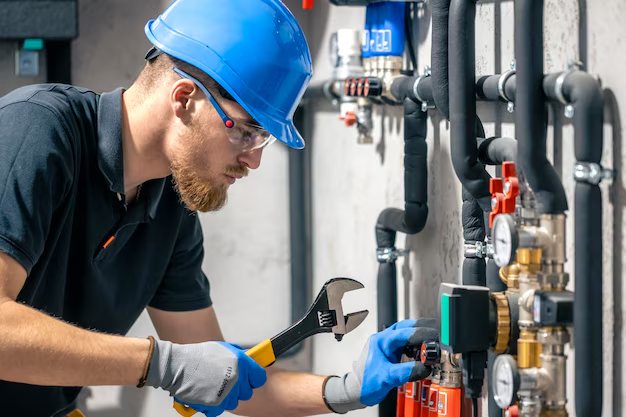Easy Steps to Safely Remove Refrigerant from Your Refrigerator
Refrigerators are a staple in modern households, quietly preserving our food and drinks every day. But when it comes time to dispose of or repair them, one significant consideration emerges: refrigerant removal. Whether you're upgrading your appliance, doing some repair work, or simply following environmental guidelines, it's crucial to understand how to safely remove refrigerant from your refrigerator. This guide will explore the process in detail, ensuring you can handle this task with confidence.
Understanding Refrigerant: What It Is and Why It Matters
What Is Refrigerant?
Refrigerant is a unique chemical compound that transforms between liquid and gaseous states inside your refrigerator, absorbing and releasing heat to keep your appliance cool. It's essential for the functioning of any cooling device, whether a household fridge or a commercial unit.
Why Is Removal Important?
The importance of proper refrigerant removal lies in its environmental impact. Many refrigerants, particularly older ones like CFCs (chlorofluorocarbons), are potent greenhouse gases. Releasing them into the atmosphere can contribute to climate change and ozone layer depletion. Moreover, handling refrigerant improperly can lead to personal safety risks.
Preparing to Remove Refrigerant: Safety First
Before diving into refrigerant removal, preparation is key. Here’s what you need to prioritize:
Safety Gear and Preparations
- Safety Gear: Equip yourself with safety goggles, gloves, and a face mask. Refrigerants can be harmful when in contact with skin or inhaled.
- Ventilated Space: Work in a well-ventilated area to disperse any accidental leaks quickly.
- Proper Tools: Make sure you have the necessary tools handy, such as a recovery machine, recovery cylinder, and pressure gauges.
Legal and Environmental Regulations
Be aware of local laws and regulations concerning refrigerant handling and disposal. Many areas require certified professionals to manage these substances due to their environmental impact. Check with local authorities to understand the specific requirements in your region.
Step-by-Step Guide to Removing Refrigerant
Once you're prepared, you can begin the refrigerant removal process. Follow these steps carefully to ensure a safe procedure.
Step 1: Disconnecting the Refrigerator
- Unplug the Unit: Always start by disconnecting the power supply to the refrigerator to prevent any electrical hazards.
- Positioning: Carefully move the refrigerator to an area where you have ample space to work, ideally with good ventilation.
Step 2: Setting Up the Recovery Machine
- Connect Hoses: Attach the hoses of your recovery machine to the refrigerator's service valve. The valves are typically located near the compressor.
- Check Seals: Ensure all connections are sealed tightly to prevent leaks during the process.
Step 3: Activating the Recovery Machine
- Power On: Start the recovery machine according to the manufacturer’s instructions. It will begin to extract the refrigerant, transferring it to the recovery cylinder.
- Monitor Pressure Gauges: Keep a close eye on the pressure gauges. A stable reading indicates that refrigerant removal is underway.
Step 4: Finalizing the Recovery Process
- Check Completion: Once the gauges show consistent readings and no more refrigerant is being extracted, the recovery process is complete.
- Seal the Cylinder: Carefully disconnect the hoses and secure the recovery cylinder with all applicable regulations for safe transportation.
Common Challenges and Troubleshooting
Handling Equipment Issues
If the recovery machine malfunctions, ensure that all hookups are correct, and check for any obstructions in the hose. Refer to the machine’s manual for troubleshooting steps.
Addressing Leakages
In the event of a leak, leave the area immediately and follow all safety protocols. Properly ventilate the space and using a ventilation fan if available.
The Importance of Professional Assistance
While DIY projects can be fulfilling, refrigerant removal is often best left to professionals. Certified technicians possess the expertise and equipment to manage this process safely and in accordance with legal standards. Plus, they can dispose of the refrigerant in a way that minimizes environmental harm.
Summary: Key Takeaways for Safe Refrigerant Removal
📌 Always prioritize safety: Wear appropriate gear and work in a ventilated area.
📌 Know your local regulations: Understanding the legal requirements can prevent fines and contribute positively to environmental efforts.
📌 Use the right tools: Ensure you have a recovery machine and proper connectors to manage the process effectively.
📌 Consider professional help: For those unsure or uncomfortable with the process, hiring a certified professional is the safest option.
Final Thoughts
Navigating the intricacies of refrigerant removal doesn't have to be daunting. Awareness of environmental impacts, along with a diligent approach to safety and adherence to regulations, can make the process straightforward. Whether you decide to manage it personally or enlist professional help, informed decisions are key to both safety and environmental stewardship. As responsible appliance owners, it’s up to us to ensure our actions align with the best practices for both ourselves and our planet.
